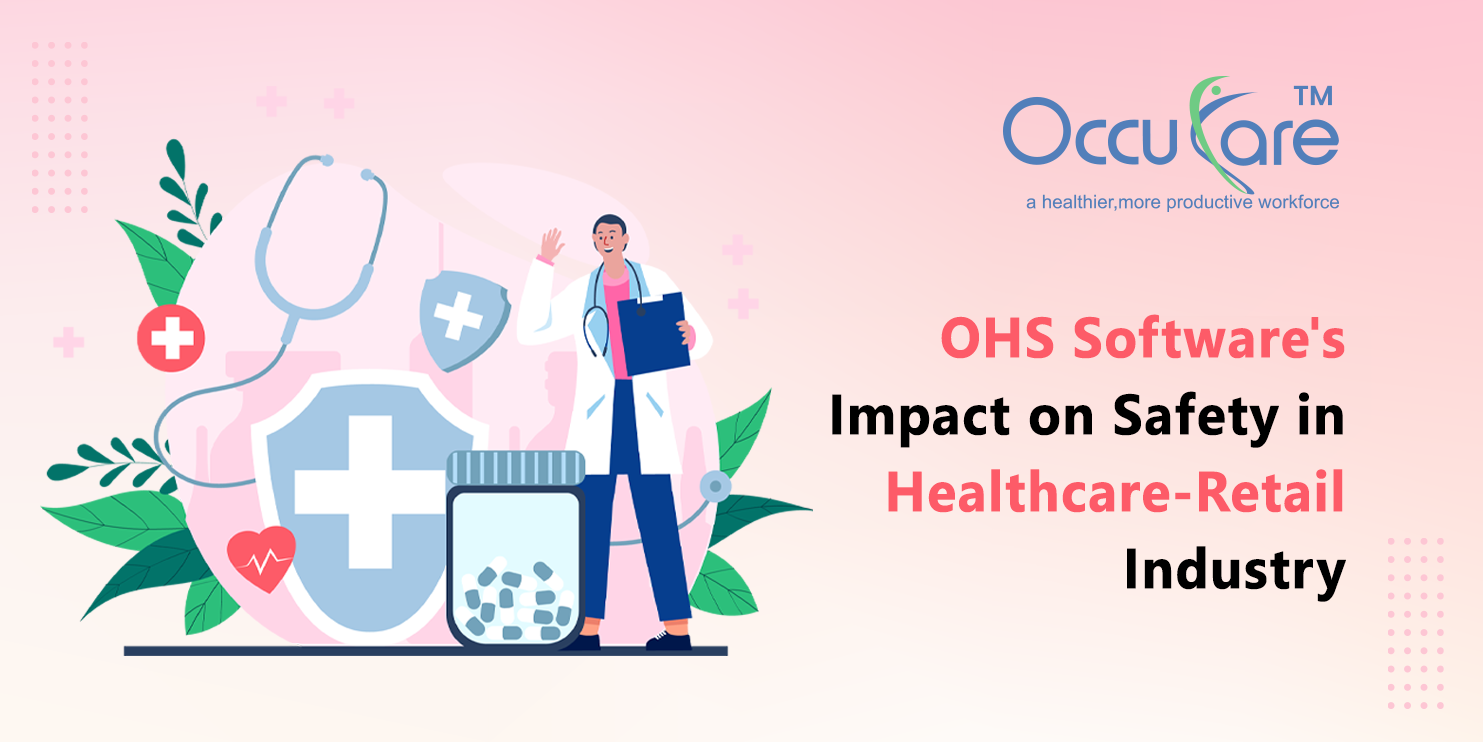The safety and well-being of both personnel and customers is crucial at the junction of healthcare and retail. With these industries’ ever-changing landscapes, ensuring a safe and healthy environment has become a major priority. Occupational Health and Safety software is one innovative solution that is making waves in this field. This cutting-edge technology is changing the way firms in the healthcare-retail sector handle safety measures, expedite operations, and improve overall well-being.
Need for Safety in Healthcare-Retail:
The intersection of healthcare and retail, colloquially known as the healthcare-retail industry, presents a unique set of difficulties that demand an uncompromising commitment to safety. This industry, where the dynamics of medical care intersect with the commercial components of retail, emphasizes the crucial need of providing a safe and secure environment for both personnel and customers.
1. Patient and Customer Safety:
Infection Control:
In healthcare-retail settings, the risk of infectious diseases spreading is heightened. Strict safety protocols are imperative to safeguard patients, customers, and staff from potential health hazards.
Accident Prevention:
In the retail space, customers may be exposed to various risks, such as slip-and-fall incidents. Ensuring a safe shopping environment is crucial to prevent accidents and subsequent liabilities.
2. Employee Well-being:
Occupational Hazards:
Healthcare-retail employees often navigate diverse tasks, from handling medications to assisting customers. Protecting them from occupational hazards and providing a secure workplace is essential for their health and job satisfaction.
Mental Health:
The demanding nature of the healthcare-retail industry can take a toll on employees’ mental health. Safety measures should extend beyond physical well-being to encompass mental health support and stress management.
3. Regulatory Compliance:
Healthcare Regulations:
Healthcare facilities within the retail setting must comply with stringent healthcare regulations to ensure patient safety. Non-compliance can result in legal repercussions and damage the reputation of the business.
Retail Safety Standards:
Adherence to retail safety standards is equally crucial. Compliance with regulations governing retail operations helps prevent accidents and fosters a positive public image.
4. Emergency Preparedness:
Medical Emergencies:
Given the healthcare component, these settings must be well-prepared for medical emergencies. Having effective emergency response plans in place can be the difference between life and death.
Retail Incidents:
Traditional retail incidents, such as fire or security threats, require comprehensive emergency preparedness strategies to safeguard both customers and employees.
5. Building Trust and Reputation:
Customer Trust:
Safety is a fundamental factor influencing customer trust. A healthcare-retail establishment with a strong commitment to safety is more likely to attract and retain customers.
Brand Reputation:
Safety incidents can significantly damage a brand’s reputation. Prioritizing safety not only safeguards individuals but also contributes to the long-term success and credibility of the business.
6. Adaptation to Industry Changes:
Pandemic Preparedness:
Recent global events have highlighted the need for healthcare-retail establishments to be adaptable and prepared for unforeseen challenges, such as pandemics. Safety measures, including infection control protocols, play a pivotal role in ensuring resilience.
Finally, the healthcare-retail industry is at the confluence of healthcare and commerce, necessitating a comprehensive approach to safety. The necessity for safety in this specialized sector is apparent, whether it’s preventing illnesses, securing staff, complying with rules, or developing trust. Adopting thorough safety procedures protects individuals while also positioning healthcare-retail establishments as responsible and trustworthy contributors to both public health and the retail scene.
Core Features of OHS Software:-
Occupation Health and Safety (OHS) software is a comprehensive solution for managing safety regulations in a variety of industries, including healthcare and retail.
The following are the major characteristics that make OHS software a significant asset in promoting a safe and secure workplace:
1. Incident Reporting and Management:
Centralized Database:
Gathers incident data in a centralized database for easy access and analysis.
Workflow Automation:
Streamlines the process of incident management, from reporting to resolution.
2. Compliance Tracking:
Audit Trails:
Maintains a detailed record of compliance activities for internal and external audits.
Alerts and Notifications:
Sends alerts about upcoming compliance deadlines to ensure proactive adherence.
3. Training and Certification Management:
Certification Tracking:
Monitors employee certifications and ensures they are up-to-date.
Automated Renewals:
Notifies employees and management about upcoming certification renewals and training requirements.
4. Emergency Response Planning:
Plan Creation:
Assists in creating comprehensive emergency response plans tailored to specific scenarios.
Drills and Simulations:
Facilitates regular emergency drills and simulations to test the effectiveness of response plans.
Communication Tools:
Includes communication features for rapid dissemination of emergency information to relevant parties.
5. Health Monitoring:
Employee Health Records:
Maintains a secure repository of employee health records, including vaccinations and medical history.
Integration with Health Devices:
Connects with health monitoring devices to capture real-time health metrics.
6. Risk Assessment:
Hazard Identification:
Supports the identification and assessment of workplace hazards.
Risk Mitigation Plans:
Facilitates the development and implementation of risk mitigation plans.
Predictive Analytics:
Utilizes data to predict and prevent potential safety risks before they occur.
7. Reporting and Analytics:
Customizable Reports:
Generates customizable reports on safety performance, incidents, and compliance.
Trend Analysis:
Enables organizations to identify patterns and trends to enhance proactive safety measures.
8. Mobile Accessibility:
Mobile Apps:
Offers mobile applications for on-the-go access to safety information and incident reporting.
Remote Training:
Facilitates remote safety training and certification processes.
9. Document Management:
Centralized Repository:
Manages safety-related documents in a centralized digital repository.
Access Controls:
Defines access permissions to control who can view or modify specific documents.
10. Integration Capabilities:
Integration with HR Systems:
Connects with human resources systems to synchronize employee data.
IoT Integration:
Integrates with Internet of Things (IoT) devices for real-time monitoring of safety metrics.
Incorporating these core features, OHS software empowers organizations in the healthcare-retail industry to proactively manage safety, comply with regulations, and create a culture of continuous improvement in occupational health and safety.
Case Studies:
1. Large Retail Health Clinics:
- Implementation of OHS software resulted in a significant reduction in workplace incidents.
- Improved compliance with healthcare regulations and streamlined training led to increased customer trust.
2. Integrated Pharmacy Chains:
- Emergency response plans facilitated quick and effective actions during unforeseen events.
- Health monitoring modules identified health trends, allowing for proactive measures to prevent outbreaks.
Conclusion:
Occupational Health and Safety software is proving to be a game-changer in the healthcare-retail industry, where the stakes are high for both employees and customers.





